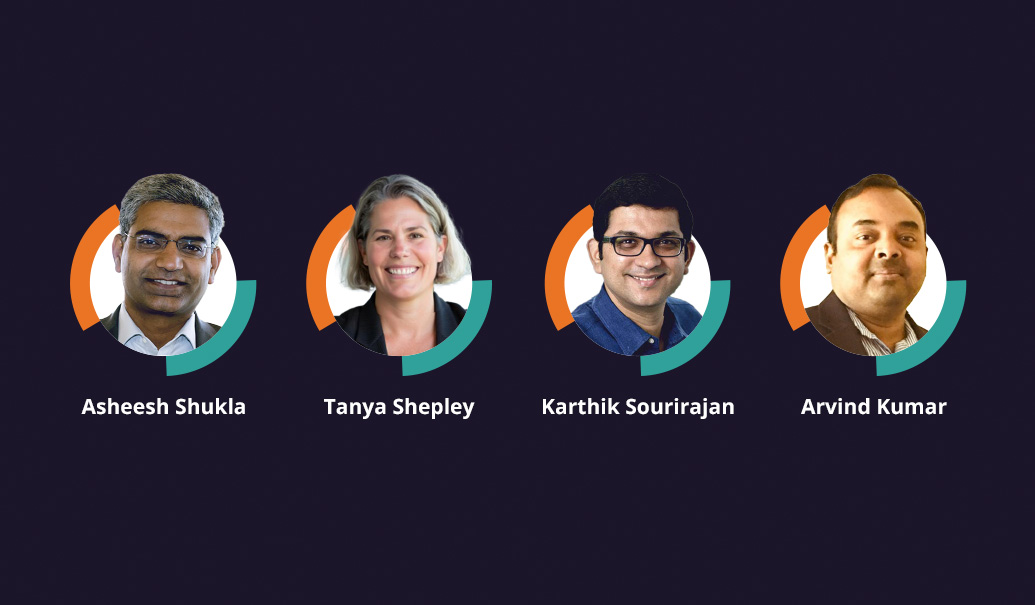In the ever-evolving world of life sciences, the generative AI-enabled future is no longer a thought experiment. It’s already revolutionizing life sciences marketing today, driving impactful results. AI tools can enable a modern go-to-market strategy, empowering organizations to build more meaningful relationships and engagement with customers.
ZS conducted a follow-up to our 2023 survey and roundtable discussions by surveying nearly 80 marketing leaders to explore the growth and opportunities for gen AI in life sciences marketing. Our analysis shows gen AI priorities in marketing have rapidly evolved over the past year, moving from ideation to pilots, with some signs of scaling real-world applications.
Our study has shown a more than double increase in marketer use of gen AI for professional purposes. However, these marketers still only make up a minority of the broader marketer population, especially for directors and below, highlighting a significant opportunity to enhance overall adoption and achieve true personalization for customers.
Many organizations are learning this shift requires investment not only just in tech, but also in operating models and change management for real adoption.
Chief marketing officers (CMOs) are recognizing the changing role of the marketer and are beginning to rethink what marketers truly own or should outsource. Pioneers in this process are gaining a competitive edge by empowering teams to get “hands on keyboard” to test, tweak and integrate gen AI into everyday workflows.
In Figure 2, marketing leaders evaluated nine unique gen AI use cases on their priority versus feasibility.
Moving to scale across key use cases in life sciences marketing
Content use cases continue to be a top priority across the gen AI agenda in pharma and medtech marketing. Creative concept ideation and derivative production have made significant strides, as several organizations are launching pilots and are preparing for full-scale adoption. However, only 20% of companies are holistically centralizing capability builds, rethinking talent and reengineering the marketer workflow. Eighty percent of life sciences marketing organizations are shaping up to be fast followers, with some experiments but limited scaling. Other trends we noticed:
- Gen AI agents to accelerate concept creation: Some life sciences leaders are equipping marketers with gen AI agents to accelerate initial concept creation of a new campaign. Pilots have shown the ability to produce twice the number of “quality” concepts in half the time, significantly reducing agency fees and iteration cycles.
- In-house content derivative generation: Many are looking at ways to optimize their derivative content generation once a new campaign is finalized. While agency-of-record collaboration remains essential for initial asset production, refining copy, imagery and channel specifications downstream helps lower costs and accelerate time to market. Market leaders have made significant progress this year, driving modular content adoption and developing automation enhancements. Many are looking to quickly scale pilots and expect to see savings of 20% to 30% on agency spend. Leaders are looking toward the next phase: building in-house agencies and developing workflow enablement tools.
- MLR process reengineering: Medical-legal review (MLR) remains a critical focus for many CMOs; however, marketers still see MLR as a black box with numerous cross-functional stakeholders, which lowers its prioritization and perceived feasibility. If we do not address this bottleneck, scaled content production and acceleration efforts won’t reach their promised potential and continue to get stuck. Some organizations are experimenting with MLR concept review in a tiered process, creating a fast track for low-risk derivative assets. To truly unlock the potential of gen AI in marketing, organizations need to rethink the MLR process and identify ways to reengineer it to align new AI technologies.
- Integrating primary and secondary data for insight mining: Insight mining holds the potential for even more value. The key advancement organizations are focusing on now is the integration of primary and secondary data. While much of the progress so far has been experimenting with unstructured market research files using large language models, real value will be unlocked when combining unstructured and structured data and putting it in the hands of marketers. For example, one large organization is working on integrating its powerful call center data with research transcripts and secondary data to empower marketers to ask the right questions and get real-time answers.
Learning from early AI adopters
The buzz around AI is growing louder, especially among brand marketers and CMOs eager to explore its potential. Our survey revealed that the primary barrier to adoption is the “fear” among marketers that “new AI tools could pose a threat,” indicating that while marketers understand the theoretical value of gen AI, they are unsure how to effectively integrate it into their jobs.
By learning from the best practices of early adopters, we can address these initial challenges and drive broader adoption:
- Reimagining end-to-end workflow: While adoption has increased over the past year, the percentage of marketers frequently leveraging gen AI in their professional careers remains low. One of the most effective ways to encourage adoption is to demystify gen AI. Live “art of the possible” showcases of real end-to-end workflows can make a significant impact, as they often result in a light bulb moment where marketers’ enthusiasm overcomes fear. The key to driving adoption is to challenge marketers to get hands-on with the tool. This approach addresses feasibility concerns and makes the promise of improving their day-to-day work tangible.
- Aligning leaders: While many brand marketers are enthusiastic, the survey revealed that some marketing leaders remain hesitant to be first movers. Concerns around “adoption hurdles,” critical “operating model changes” and “unknown ROI realization” all contribute to this hesitation. The majority of life sciences organizations will prefer to watch and wait for a proven off-the-shelf solution. Although there are opportunities for progress in areas like prompt engineering or parameter selection, leaders who are reluctant to take the leap are missing the chance to rapidly learn and iterate and bring their teams along the change curve, which will take years to disrupt.
The 2025 roadmap for life sciences marketing
CMOs agree that 2025 is the year of broader adoption for gen AI in life sciences marketing. First movers have begun to outline best practices and key learnings. But shifting the mindset from gen AI as just a tool to an interconnected ecosystem is crucial to unlocking its full potential. Here are some ways organizations can begin:
- Leadership commitment to disruption: Organizations should begin by taking a holistic approach to a marketer’s end-to-end workflow, such as content creation or brand planning. Additionally, it’s crucial to have leadership commitment to the enablers that make this workflow effective. This means investing not only in developing technology capabilities but also in the surrounding operating models, data strategy, compliance, training, change management and more.
- Rethinking the talent model: Early adopters have learned that there’s a need to bring in external expertise, especially to insource work currently handled by agencies. By integrating talent from other industries with skills in content generation, companies can accelerate adoption and build internal capabilities. For existing employees, significant mindset shifts and upskilling in data-driven decision-making, prompt engineering and customer-centric marketing will be essential for success.
- Agentic workflow enablement: As a broader shift in mindset this year, marketing leaders are beginning to view gen AI initiatives as an interconnected ecosystem. Many are considering how to scale multiple foundational use cases, such as module extraction, derivative production and MLR review simultaneously. This approach aims to build a fully AI-enabled content supply chain.
In 2023, gen AI was something an R&D or technology organization was toying with, but marketing teams were largely left behind. In 2024, experimentation drove many marketers to really understand the changes to come and how it can transform their work. Now is the time to focus on not only measuring but also capturing value for our organizations at scale.
If not, we risk senior leaders scratching their heads, questioning the value gained of having more pilots than a commercial airline but nothing at scale available to all.
Add insights to your inbox
We’ll send you content you’ll want to read – and put to use.
















